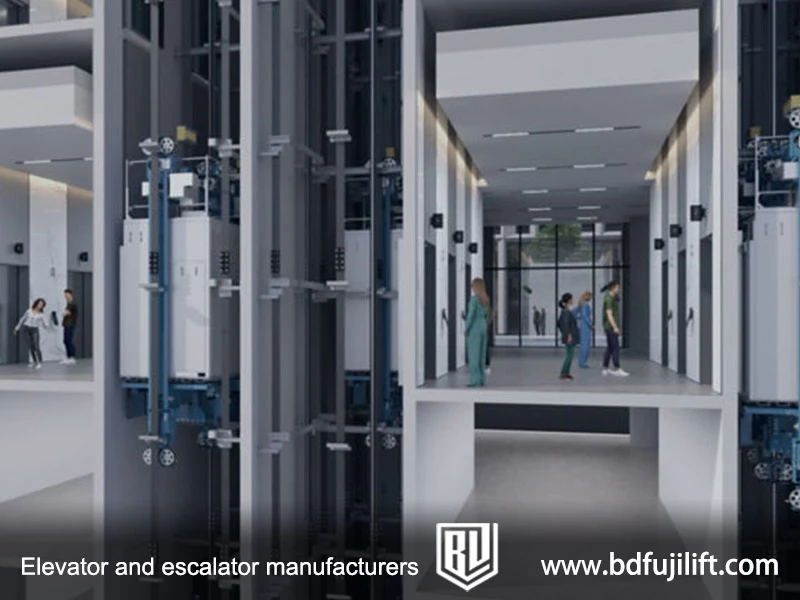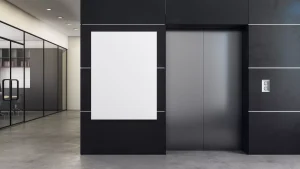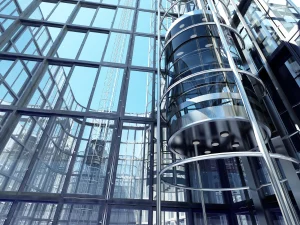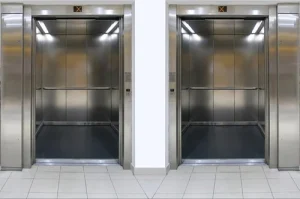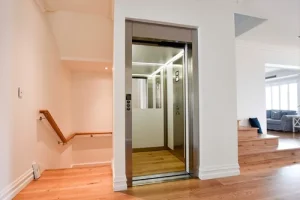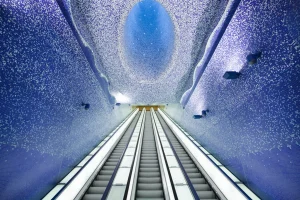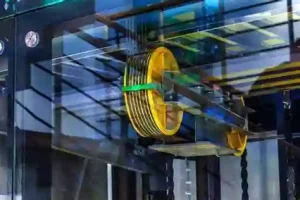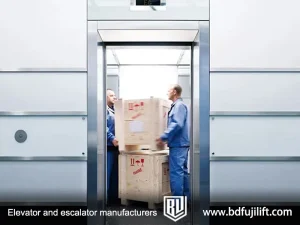There are many elevator types used in different kinds of buildings. Some elevators are made for homes or short buildings, while others are used in tall towers. To help builders and owners choose the right one, elevators are often grouped by how many floors they serve.
These groups are called low-rise elevators, mid-rise elevators, and high-rise elevators.
Many people wonder what makes them different. In this article, we will explain the elevator classification system and show how each type works best in different buildings. You will also learn which elevator for X-floor building is right for your needs.
Differences Between High-Rise, Mid-Rise, and Low-Rise Elevators
High rise elevator, mid rise elevator, and low rise elevator are all common elevator types. They use similar technology, but they are made for different kinds of buildings. The main differences come from how high the elevator travels and what kind of building it is in.
- Travel Height : Low rise elevators are used in buildings with 2 to 4 floors. Mid rise elevators work well for buildings with 5 to 12 floors. High rise elevators are made for tall towers with 12 floors or more.
- Speed : Low rise elevators move slowly, around 0.3–0.5 m/s. Mid rise elevators are faster, often 1–1.75 m/s. High rise elevators are the fastest and can move over 2 m/s.
- Shaft and Pit : High rise elevators need a deep shaft and big machine space. Mid rise elevators also need a shaft, but smaller. Low rise elevators can sometimes work without a deep pit or machine room.
- Drive Type : Low rise elevators often use hydraulic or screw drive systems. Mid rise elevators usually use traction systems. High rise elevators need strong traction systems or double-deck designs.
- Cost : Low rise elevators cost the least. Mid rise elevators cost more. High rise elevators are the most expensive because they need strong parts and more safety systems.
- Building Type : Use low rise elevators for homes, villas, and small offices. Mid rise elevators fit hotels, schools, and mid-size buildings. High rise elevators are used in skyscrapers, hospitals, and large office towers.
- Installation and Maintenance : Low rise elevators are easy to install and fix. Mid rise elevators take more time and care. High rise elevators need expert teams and more checks.
What Is a High-Rise Elevator?
A high rise elevator is an elevator made for tall buildings, usually with more than 12 floors. Some of these elevators can travel over 200 meters high.
They use strong traction systems to move people quickly and safely. Most high rise elevators need a deep shaft and a machine room.
Some models also use double-deck cars or high-speed motors to carry more people and reduce waiting time.
Advantages of High-Rise Elevators
- Fast Travel: High rise elevators can move very fast, sometimes more than 6 meters per second.
- Good for Heavy Traffic: They can carry many people and stop at many floors.
- Advanced Technology: They often use smart control systems for smooth rides.
- Safe for Tall Buildings: These elevators are tested for strong winds, earthquakes, and long distances.
Disadvantages of High-Rise Elevators
- High Cost: They are the most expensive elevator classification to buy and install.
- Complex Setup: They need strong building structures and a deep pit.
- More Maintenance: Because of fast speed and many parts, they need more care.
When to Use a High-Rise Elevator
You should choose a high rise elevator if:
- Your building is more than 12 floors tall
- You need fast travel between many levels
- You are building a skyscraper, hotel, or hospital
- You want smart controls and safety features
What Is a Mid-Rise Elevator?
A mid rise elevator is used in buildings with 5 to 12 floors. It is faster than a low rise elevator, but not as fast as a high rise elevator. Most mid rise elevators can travel up to 40 meters.
These elevators often use traction systems, with or without a machine room. They offer a good balance of speed, cost, and performance.
Advantages of Mid-Rise Elevators
- Balanced Speed: Faster than low rise, but still smooth and quiet.
- Good for Medium Buildings: Designed for buildings with a moderate number of floors.
- Flexible Design: Can be used with or without a machine room.
- Affordable: Cheaper than high rise elevators, but more powerful than low rise ones.
Disadvantages of Mid-Rise Elevators
- Not for Very Tall Buildings: Cannot handle very high travel like high rise elevators.
- Needs Shaft Space: Still needs a shaft and proper structural support.
- Moderate Cost: More expensive than low rise options.
When to Use a Mid-Rise Elevator
A mid rise elevator is a good choice if:
- Your building has 5 to 12 floors
- You want something faster than a low rise model
- You need a balance between speed, cost, and space
- You are building a hotel, school, or mid-size office
What Is a Low-Rise Elevator?
A low rise elevator is made for buildings with 1 to 4 floors. Most low rise elevators use hydraulic, screw drive, or MRL (machine room-less traction) systems. They move at slower speeds, usually around 0.3 to 0.5 meters per second. Many models do not need a deep pit or large machine room.
Advantages of Low-Rise Elevators
- Lower Cost: Cheapest among all elevator types
- Easy Installation: Simple setup, good for small spaces
- Compact Design: Works well in narrow shafts or even indoors
- Quiet and Safe: Smooth ride, safe for families and older people
Disadvantages of Low-Rise Elevators
- Limited Height: Can’t go above 4–5 floors
- Slower Speed: Not suitable for buildings with lots of floors or people
- Smaller Cabin Size: Usually holds fewer passengers or items
When to Use a Low-Rise Elevator
Choose a low rise elevator if:
- Your building has 1 to 4 floors
- You want a simple and affordable lift
- You don’t have room for a big machine space
- You are installing an elevator in a house, villa, or small shop
How to Choose Between High-Rise, Mid-Rise, and Low-Rise Elevators?
Choosing the right elevator depends mostly on building height, and then on other needs like speed, usage, and budget. Here’s how to make the right choice:
- 1. Building Height (Most Important) : The height of your building is the most important factor in elevator classification. For buildings with 1 to 4 floors, a low rise elevator is the best choice. If your building has 5 to 12 floors, then a mid rise elevator works best. For buildings with 13 or more floors, you’ll need a high rise elevator. Even if your building doesn’t have a large number of people, you still need to select the correct type of elevator for safety, travel distance, and speed.
- 2. People and Usage : The number of people using the elevator is another important factor. A building with low traffic might only need one elevator, while a busy office or hospital may need two or more elevators or even a group control system to manage the flow of people. High rise elevators often include express zones to allow faster movement for users, especially in tall buildings. But remember, don’t choose a low rise elevator just because fewer people use it—it cannot safely handle the needs of taller buildings.
- 3. Speed : The speed of the elevator is determined by the height of the building. Low rise elevators move slowly, around 0.3 to 0.6 m/s. Mid rise elevators are faster, typically 1.0 to 1.75 m/s. High rise elevators are the fastest, moving at speeds between 2.0 and 6.0 m/s or more. Taller buildings need faster elevators so that people don’t have to wait too long to reach their destination.
- 4. Budget and Space :When considering an elevator, cost and space are key factors. Low rise elevators are the most affordable and easiest to install. High rise elevators are more expensive, requiring deep pits and tall shafts for proper installation. Mid rise elevators fall between, with both price and space requirements that are higher than low rise but lower than high rise.
Conclusion
High rise elevators, mid rise elevators, and low rise elevators cater to different building needs. Each type comes with its own price point and is suitable for specific applications. With the information provided above, you can now easily choose between these elevator types for your elevator for building


